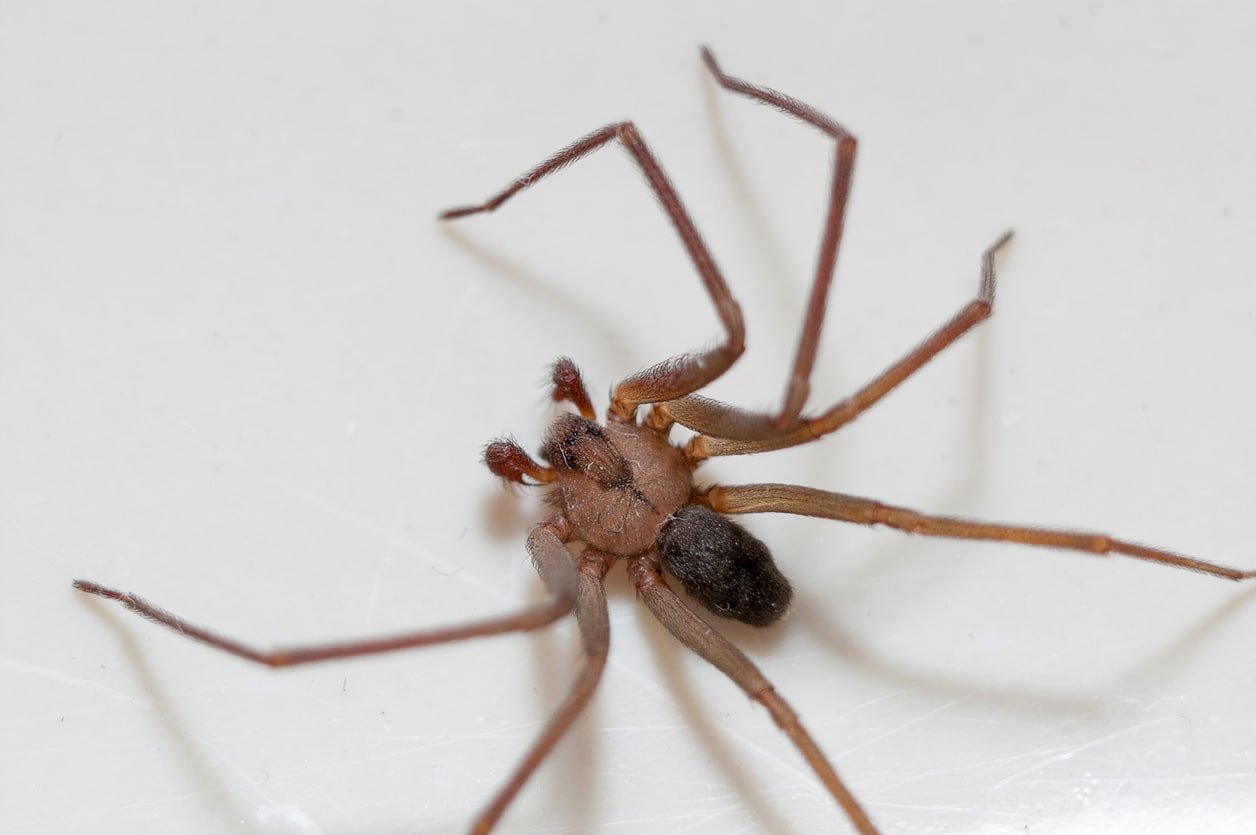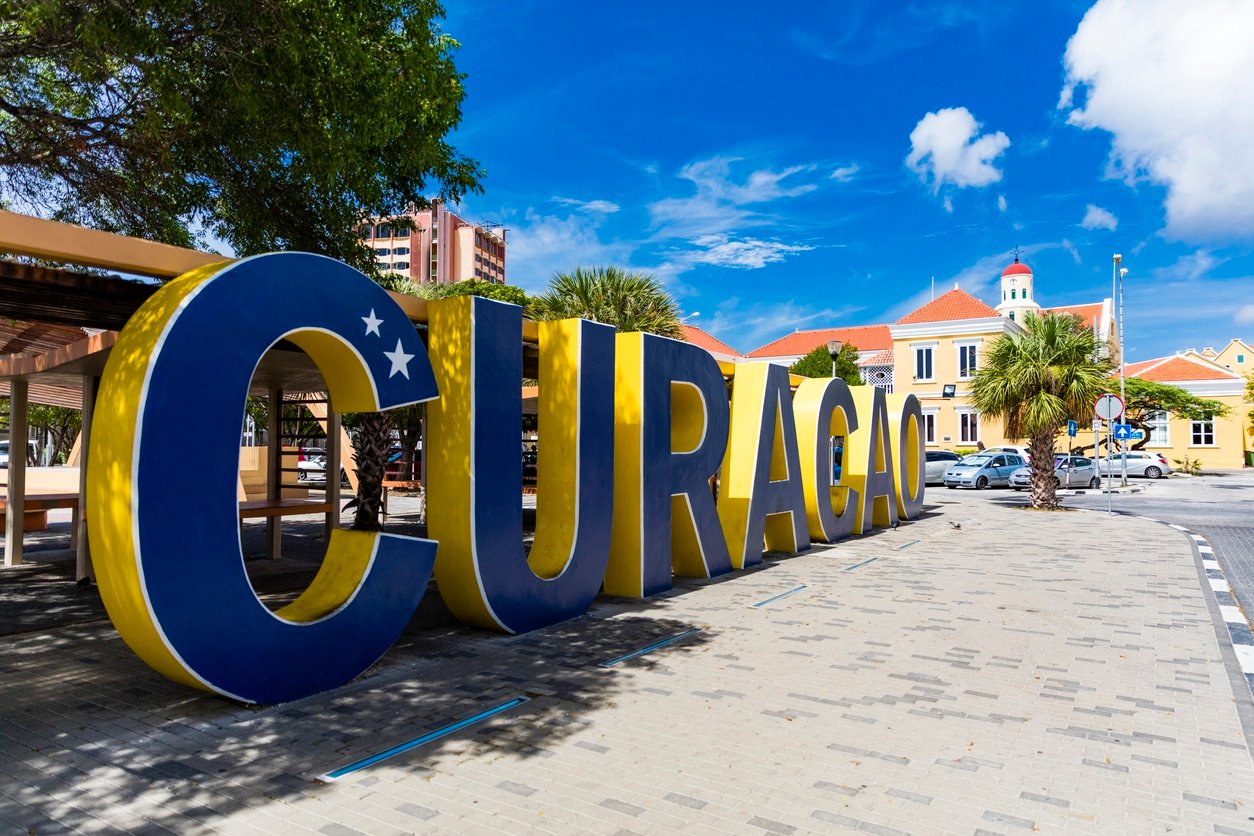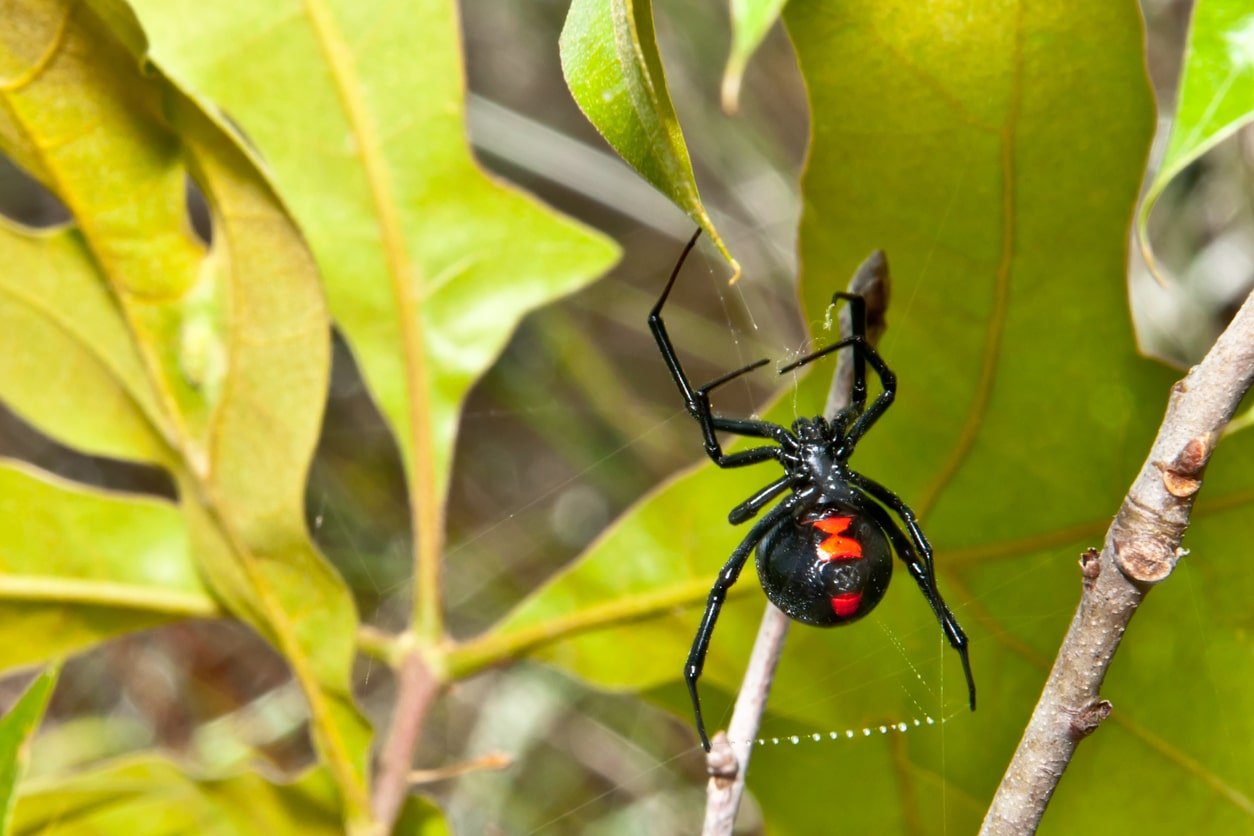Spiders in the Dominican Republic: Common and Deadly Spiders You Might Encounter
|
Prefer listening over reading? We got you covered!
Getting your Trinity Audio player ready...
|
Are you making plans for a trip to the Dominican Republic? If so, you might be worried about the wildlife you’ll encounter. Many travels are particularly concerned about spiders found in the Dominican Republic, since many tarantula species are known to live in the Caribbean.
To prepare you for your trip to the Dominican Republic and places like Punta Cana and Puerto Plata, we’ve compiled a list of the seven main species of spiders you’ll find here in the Dominican Republic.
Of the seven varieties listed, two species in the Dominican Republic have venom that are deadly to humans. However, the bites of some of the others can still cause pain, even if they shouldn’t cause any long term effects.
We’ll describe each spider’s appearance and note where it’s likely to be found. In each section, we’ll give you the information you need to know if you happen across these spiders during your visit. Read on to make sure you’re prepared!

1. Phormictopus Cancerides (Hispaniolan Giant Tarantula)
The Hispaniolan Giant Tarantula is one of the largest spider species in Latin America and it makes its home in the Dominican Republic. When it comes to the biggest spiders in the Dominican Republic, these ones are massive!
These giant spiders exhibit violent hunting behavior and have long and powerful fangs. When hunting, they shake hairs from their abdomen and stick them into skin, causing massive irritation.
Appearance:
These giant spiders have a bronze color that can look almost purple in some instances. The male spiders are often more colorful than the females. These tarantulas have large, hairy legs and giant fangs that can be more than two centimeters long.
Size:
These massive spiders can be 7 to 8 inches in diameter.
Behavior & Venom:
The males often only live 18 to 24 months, while the females can live 20 years or longer. They’re more active in October and November, as well as during the night.
During daylight hours they hide in caves and under rocks. They come out at night to hunt.
They use their massive fangs to inject venom into their prey. The venom paralyzes their prey and begins to break down the tissue. They eat by sucking out the softened insides of their prey.
When facing a person, they’re more likely to flee than to fight. However, they do occasionally bite humans. Their bite is extremely painful, but it rarely causes serious complications.
Bottom Line:
These spiders may seem terrifying, but you’re unlikely to encounter them when visiting the Dominican Republic. Because they fear people, they don’t live in inhabited spaces. Even if you’re visiting rural communities, you’re unlikely to find this specific type of tarantula.
If you happen across these spiders, give them space and don’t handle them. Although their venom won’t kill you, it will hurt immensely. Seek medical treatment to tend to any bites by these spiders.
2. Alcimosphenus Licinus (Dominican Spider)
The Dominican Spider is part of a family of long-jawed orb-weaver spiders. It’s found throughout the Caribbean, including the Dominican Republic.
Appearance:
The females have bright red abdomens and a cephalothorax with black markings. They have what looks like eyelashes growing off the back of their femurs.
Female Dominican Spiders can have an elongated tail that’s either pointed or forked, based on geographic location.
The males are tiny with a more orange-like color. Their oval abdomen has a dark posterior patch and some small white patches. Their palps (the elongated nubs near a spider’s mouth) are large and bulbous when compared to their body size.
Size:
Females are between 6 and 10 millimeters long, while males are only 1 to 1.8 millimeters long.
Behavior & Venom:
These spiders typically keep to themselves. While you may see them in their webs, you may not have any prolonged interaction with them.
Humans may have a reaction to a Dominican Spider bite, although it’s unlikely to cause a serious reaction (unless you’re allergic).
Bottom Line:
These spiders may look fearsome, but they won’t harm you. You may see these and other orb spiders during your visit, but you don’t have to worry about dying from their bite.
3. Leucauge Argyra (Orchard Orb Weaver)
The Orchard Orb Weaver is another orb weaver spider in the Dominican Republic.
This spider is a host for the parasitoid wasp. Parasitoid wasps modify the spider’s web-building behavior to create a web strong enough to hold the wasp’s nest.
Appearance:
These spiders have large, bulbous abdomens with lines running halfway across them. Like many orb weaver varieties, the marking can vary greatly between individual spiders. Some related species have an inverted v-shaped marking across the stomach.
Because they often have reddish-orange markings on the abdomen, many people mistake these spiders for the far more dangerous, and deadly, black widow.
The Orchard Orb Weaver can have green, greenish-black, or black legs. The joints on their legs are often lighter in color, although this is not always the case. The males typically have longer legs and more bulbous palpi compared to the females.
Size:
The female’s body can be between 5.5 and 7.5 millimeters, while the males are only 3.5 to 4 millimeters.
Behavior & Venom:
These spiders maintain individual webs within a network of shared support lines, making them one of a few different colonial species of spiders.
Orchard Orb Weavers rarely ever bite. When they do, they don’t cause serious harm.
Bottom Line:
That doesn’t make these spiders safe, though. Because their markings can be confused with the very deadly black widow, it’s best to avoid any spiders with red abdominal markings unless you’re 100% certain it’s an Orchard Orb Weaver.
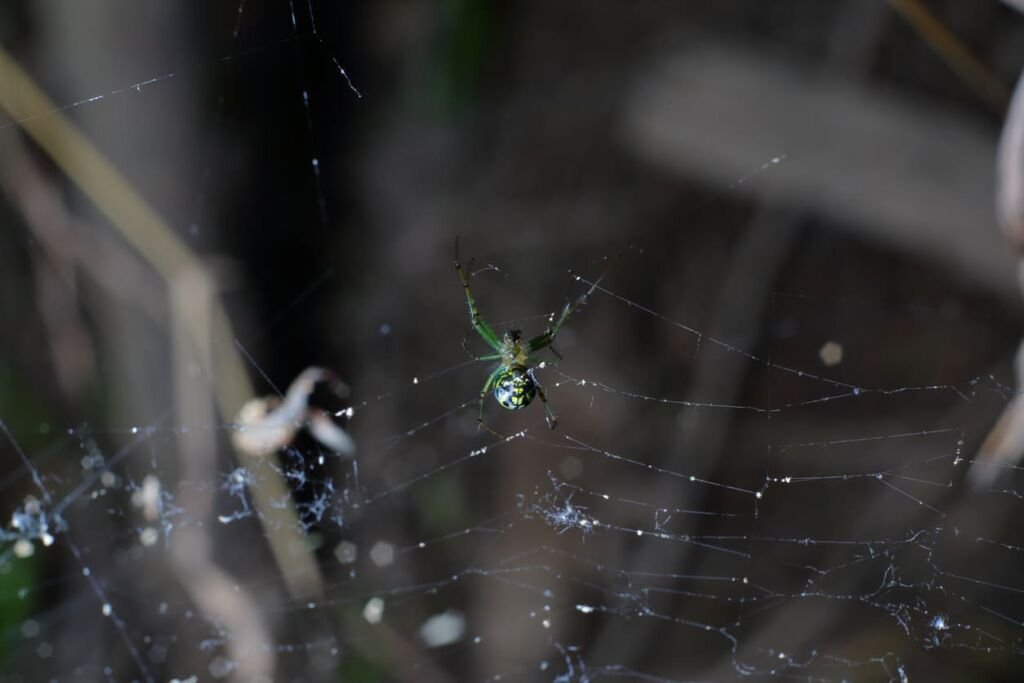
4. Citaracanthus Spinicrus (Cuban Cinnamon Tarantula)
The Cuban Cinnamon Tarantula is another species found in the Dominican Republic. They are known for their iridescences that have bright purple, violet, and blue colors.
Appearance:
Both male and female Cuban Cinnamon Tarantulas have purple, blue, and violet iridescence. However, the females often lose color and turn brown over time, especially when they’re fully mature at 30 months old.
Size:
These tarantulas can grow to be quite large, although they are not as large as the Hispaniolan Giant Tarantula. They are one of the biggest spiders in the Dominican Republic, but typically are less than seven inches across.
Behavior & Venom:
The female Cuban Cinnamon Tarantulas kill the males after copulation. Over time, the females lose their shiny black color and iridescence. After mating, they lay about 150 eggs.
Their venom won’t kill humans, although it can be quite painful. Like other tarantula species, their venom is more painful than dangerous.
Bottom Line:
If you see these tarantulas, give them space and they’ll likely leave you alone. Like all tarantula species, their bites can cause significant pain. Although their venom won’t cause serious damage, you may want to seek medical treatment for their bites.
5. Heteropoda Venatoria (Huntsman Spider)
The Huntsman Spider is sometimes called the Giant Crab Spider, the Housekeeping Spider, and the Banana Spider. This common spider is large but harmless.
Some believe that it’s bad luck to kill this spider, since it’s a good spider that kills harmful insects.
Appearance:
This spider is usually brown or gray. It can also have black and white patches. It often has reddish patches near the mouth and legs with spines. The rest of the spider’s body often looks smooth and furry, with fine hairs covering it.
They have eight eyes in two forward-facing rows of four. Although these spiders are often confused with tarantulas, their legs are twisted forward in a crab-like shape instead of jointed vertically relative to the body.
Size:
Their leg span can be anywhere from five to twelve inches! Their large size and slightly hairy bodies are the primary reason why they’re confused with tarantulas.
Behavior & Venom:
These spiders like to live in woody places like forests, wooden shacks, and woodpiles. They often live under rocks and bark and in sheds and garages.
Huntsman spiders feed on insects. Although their bites can be painful to humans, they are not deadly. They are more likely to run away than to bite a human.
Bottom Line:
Their large appearance may be frightening, but these spiders are relatively harmless. You may run into them in any woody area. Although their bites may hurt, they will not cause serious harm unless you’re allergic to their venom.
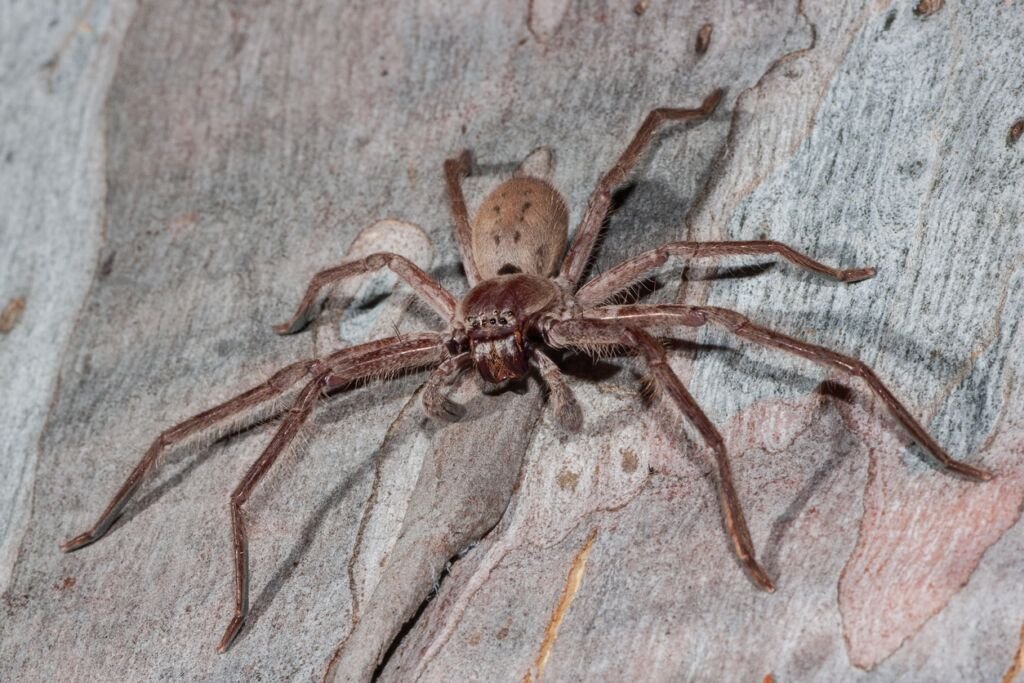
6. Loxosceles Caribbaea (Brown Recluse or Violin Spider)
The Brown Recluse is a highly dangerous spider that can cause severe injury and death. They often hide in dark places and corners in homes. It’s important to shake out and check your clothes and shoes to ensure these deadly spiders aren’t hiding in them.
Appearance:
These spiders are typically light to medium brown, although they can also be whitish to dark brown to blackish gray. They often have abdominal markings that look like a violin, with the “neck” of the violin pointing to the rear of the spider.
Their most distinctive feature is their six eyes arranged in pairs. Since the violin shape can vary greatly, they can only be positively identified by their eyes. They have fine, short hairs that look like fur. Although their leg joints may have a slightly lighter color, this is not always the case.
Size:
Brown Recluse spiders often grow from 6 to 20 millimeters, although they sometimes grow larger in the Dominican Republic.
Behavior & Venom:
These spiders tend to avoid people and light, thus the name “recluse.” However, their venom is highly dangerous and can cause severe injury or death. Their venom is fifteen times more toxic than a cobra’s venom.
Brown Recluse bites require immediate medical attention. If possible, capture the offending spider in a clear, airtight container. It may help doctors make a positive identification for treatment purposes.
Bottom Line:
If you see these spiders, steer clear. Since their venom is so lethal, it’s important to seek immediate medical care if one of these spiders bite you.
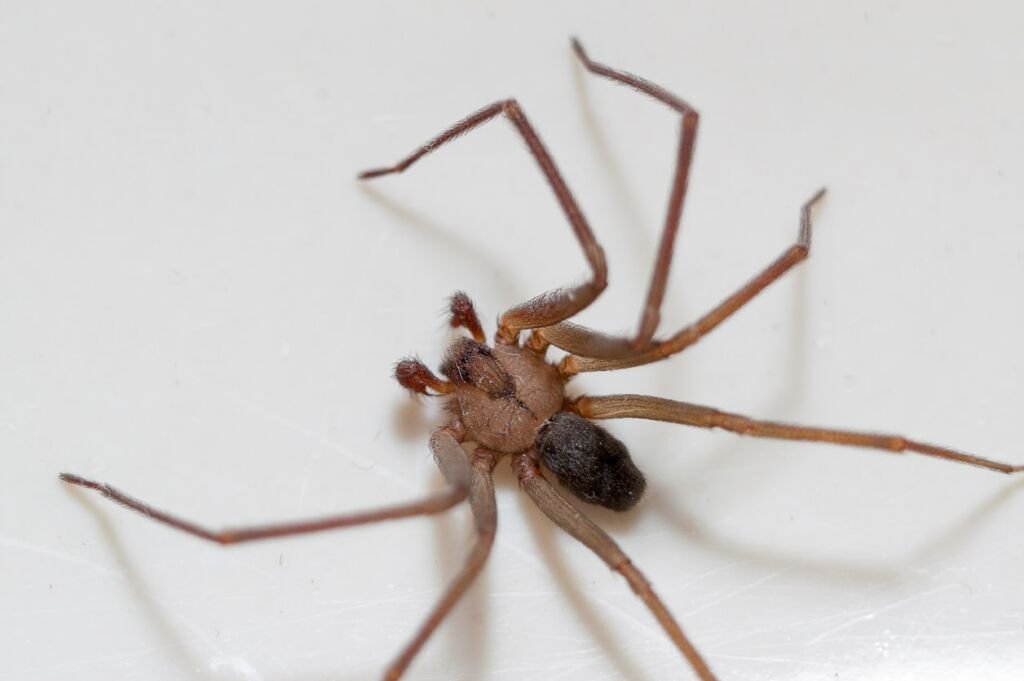
7. Latrodectus Mactans (Black Widow) and Latrodectus Geometricus (Brown Widow)
The Black Widow and Brown Widow are highly venomous spiders found in the Caribbean, including the Dominican Republic. While Black Widows are indigenous to the Americas, the Brown Widows are native to Africa (but have invaded areas around the world).
Appearance:
Both spiders have a distinctive red hourglass shape on their abdomen. The spiders can range from mostly black to black with lighter portions on the body.
Size:
Female widows can grow to 13 millimeters in length, while the males typically only grow to 3 to 10 millimeters in length.
Behavior & Venom:
These spiders can be found just about anywhere and their venom is highly toxic. Fifteen to thirty minutes after the bite, a person will feel muscular pain throughout the body. Symptoms of a widow bite also include trouble breathing, muscle cramps, anxiety, headache, high blood pressure, nausea, vomiting, sensitivity to light, numbness, and even seizures.
Untreated, widow bites can result in death.
Bottom Line:
Avoid these spiders at all times. If a widow spider bites you, seek immediate medical treatment. Their venom is very toxic, so it’s vital to seek medical treatment to prevent serious injury or death.
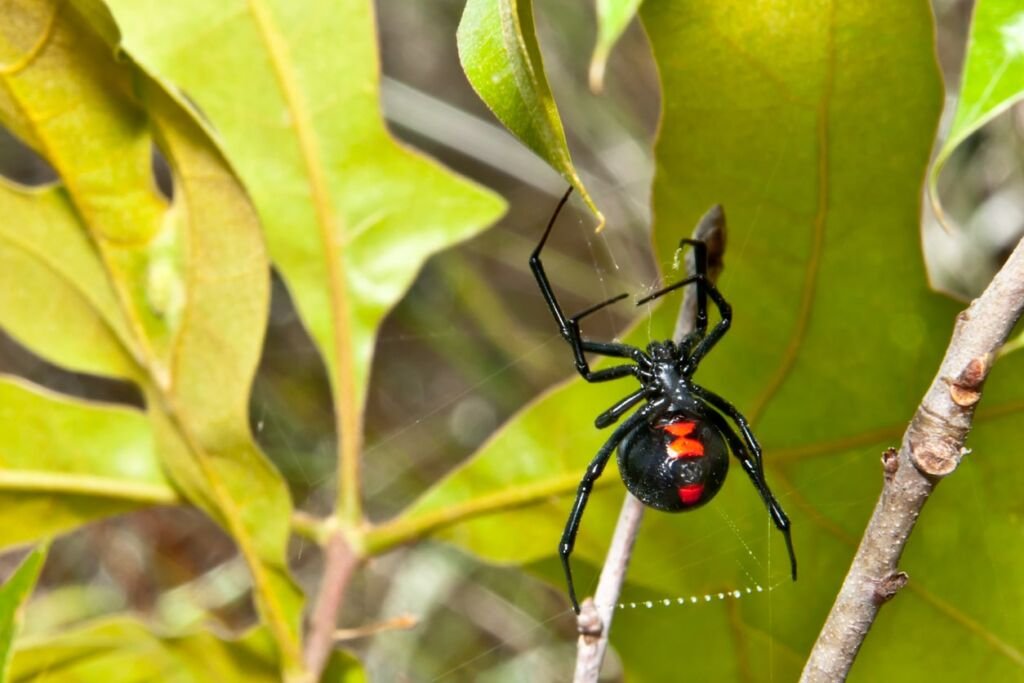
Should You Get Treatment?
In most cases, you won’t need medical treatment for spider bites in Dominican Republic, unless bitten by one of the dangerous spiders detailed above, or if you have an allergic reaction.
However we still recommend seeing a doctor for any spider bite. And if symptoms start to get worse, you should immediately seek medical assistance from a hospital.
To treat yourself directly after being bitten, you should wash the area with soap and water. If possible, elevate the area and apply a cold compress to reduce swelling. If you are having pain, consider an over-the-counter pain reliever, and if there is swelling or itching, you can take an antihistamine.
Our Final Thoughts
The Dominican Republic is home to a few dangerous animals and insects, and unfortunately some spiders fall into that category. (Related: Snakes in the Dominican Republic).
If you do find any spiders in your room, you shouldn’t try to handle them as they could bite you for doing so. If not provoked most spiders in the Dominican Republic will not attempt to interact or cause problems for humans. If you’re in a resort, you should leave your room and have the resort staff handle any spiders.
However the chances of you coming across a deadly spider in the Dominican Republic is incredibly rare. This is a beautiful country which is well worth visiting.


